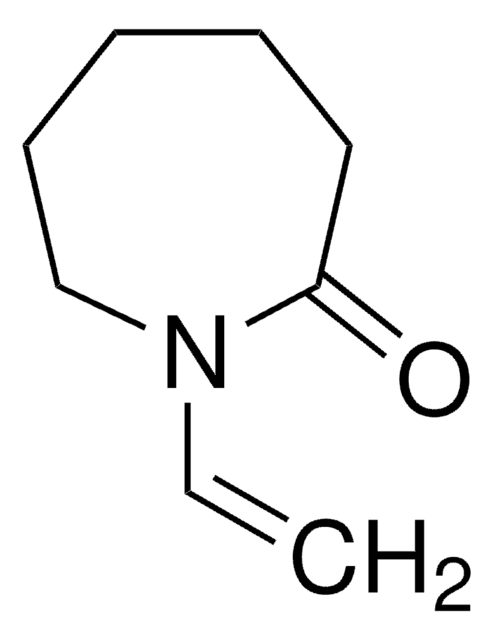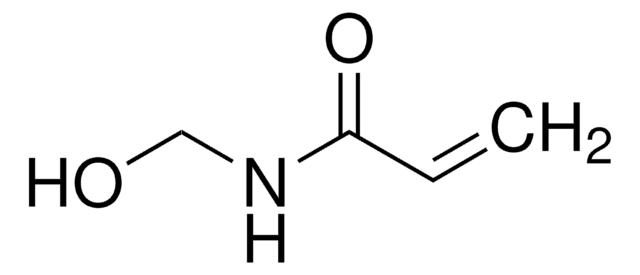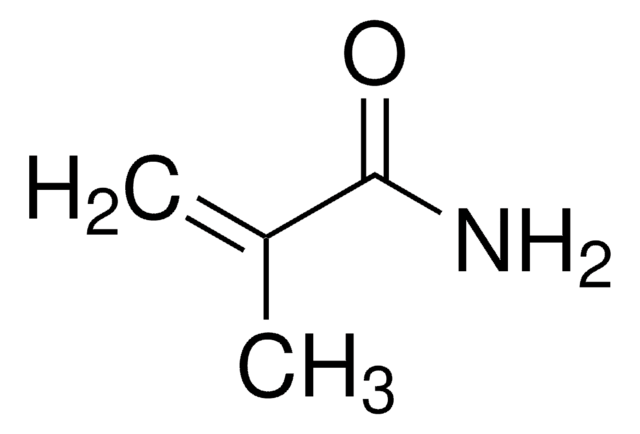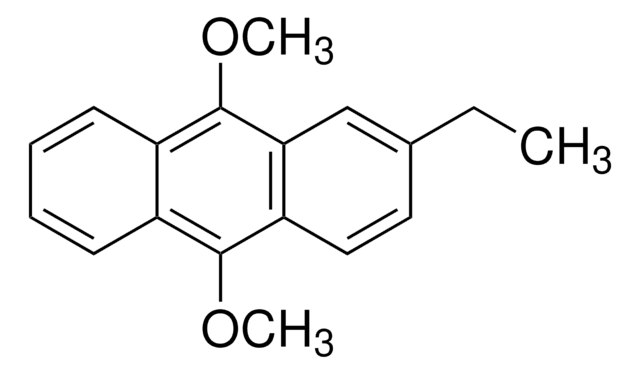おすすめの製品
品質水準
アッセイ
99%
フォーム
liquid
含みます
<200 ppm MEHQ as inhibitor
屈折率
n20/D 1.468
密度
0.924 at 25 °C
保管温度
2-8°C
SMILES記法
CCN(CC)C(=O)C=C
InChI
1S/C7H13NO/c1-4-7(9)8(5-2)6-3/h4H,1,5-6H2,2-3H3
InChI Key
OVHHHVAVHBHXAK-UHFFFAOYSA-N
アプリケーション
Acrylamide monomer used to make polymers for drug delivery; thermal responsive polymers; and solutions with specifically tuned LCSTs.
シグナルワード
Warning
危険有害性情報
危険有害性の分類
Acute Tox. 4 Oral - Eye Irrit. 2
保管分類コード
10 - Combustible liquids
WGK
WGK 3
引火点(°F)
192.0 °F
引火点(℃)
88.89 °C
適用法令
試験研究用途を考慮した関連法令を主に挙げております。化学物質以外については、一部の情報のみ提供しています。 製品を安全かつ合法的に使用することは、使用者の義務です。最新情報により修正される場合があります。WEBの反映には時間を要することがあるため、適宜SDSをご参照ください。
消防法
第4類:引火性液体
第三石油類
危険等級III
非水溶性液体
Jan Code
773212-VAR:
773212-25G:
773212-BULK:
この製品を見ている人はこちらもチェック
Nuran Işıklan et al.
Carbohydrate polymers, 218, 112-125 (2019-06-22)
Pectin based micro/nanocarriers display promising properties for biomedical applications. In this study, thermo/pH-responsive chitosan coated pectin-graft-poly(N,N-diethyl acrylamide) (Pec-g-PDEAAm/CS) microcarriers containing 5-Fluorouracil (5-FU) as a model drug were developed. The structure, thermal stability and surface morphology of 5-FU-loaded microcarriers were investigated
Wei Wei et al.
Colloids and surfaces. B, Biointerfaces, 136, 1182-1192 (2015-11-23)
Salecan is a water-soluble microbial polysaccharide produced by Agrobacterium sp. ZX09, a salt-tolerant strain isolated from a soil sample in our laboratory. Previous work inspired us salecan is a good candidate to fabricate hydrogels. Poly(N,N-diethylacrylamide) is one type of thermo
Xuemei Wu et al.
Sensors (Basel, Switzerland), 18(10) (2018-10-10)
In this work, binary hydrogel films based on carboxylated multi-walled carbon nanotubes/poly(N,N-diethylacrylamide) (c-MWCNTs/PDEA) were successfully polymerized and assembled on a glassy carbon (GC) electrode surface. The electroactive drug probes matrine and sophoridine in solution showed reversible thermal-, salt-, methanol- and
Z Ding et al.
Nature, 411(6833), 59-62 (2001-05-03)
Many medical and biotechnological processes rely on controlling and manipulating the molecular-recognition capabilities of proteins. This can be achieved using small molecules capable of competing for protein binding or by changing environmental parameters that affect protein structure and hence binding.
Okano, T.;
J. Controlled Release, 11, 255-265 (1990)
Global Trade Item Number
| カタログ番号 | GTIN |
|---|---|
| 773212-25G | 4061832930800 |
ライフサイエンス、有機合成、材料科学、クロマトグラフィー、分析など、あらゆる分野の研究に経験のあるメンバーがおります。.
製品に関するお問い合わせはこちら(テクニカルサービス)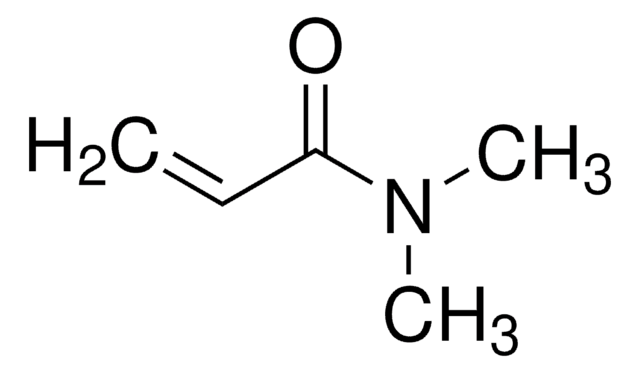
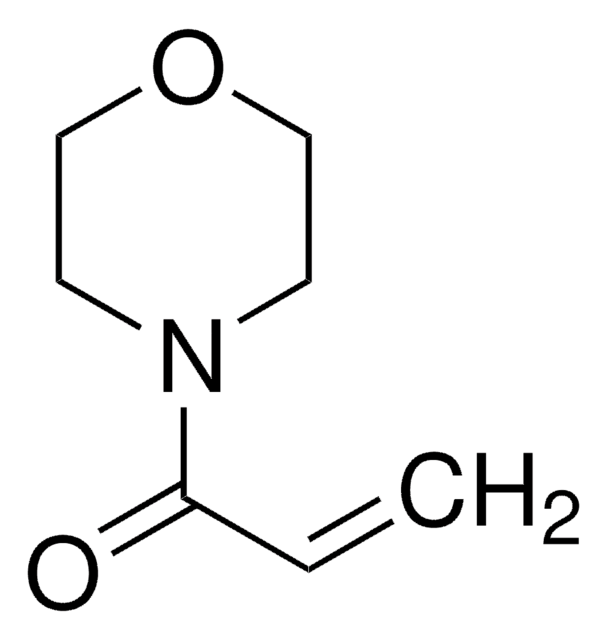
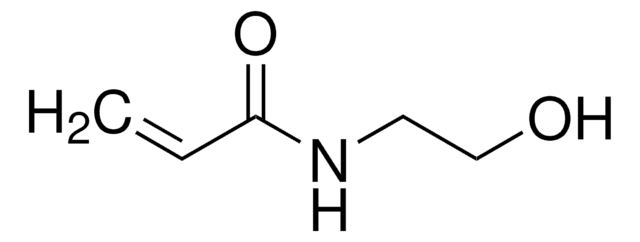
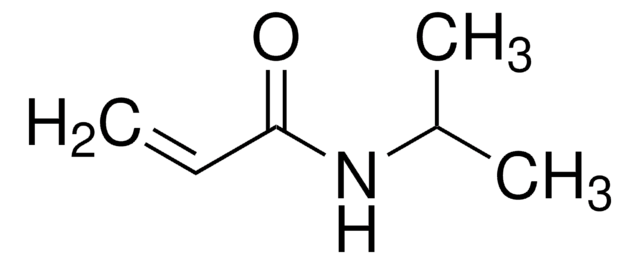


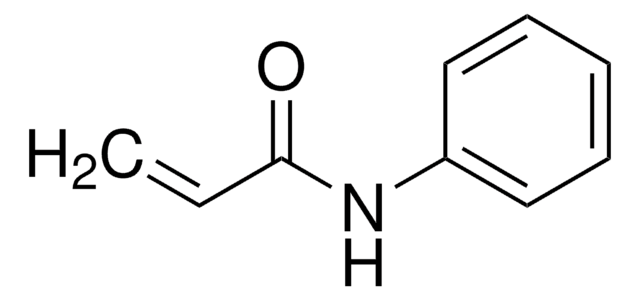
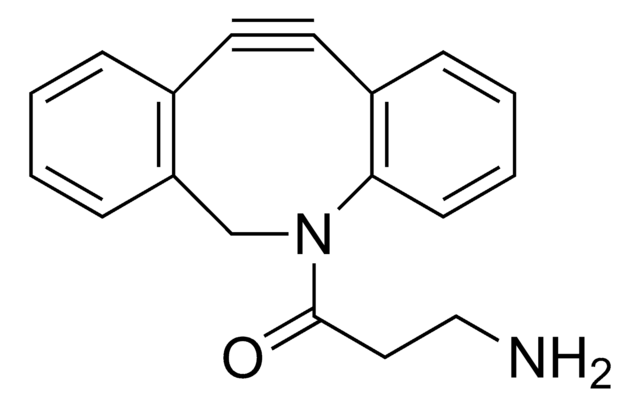


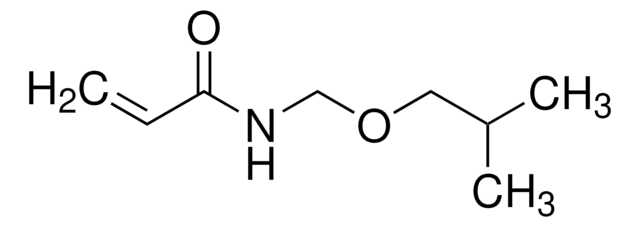
![N-[Tris(hydroxymethyl)methyl]acrylamide contains ≤7% KCl, 93%](/deepweb/assets/sigmaaldrich/product/structures/130/961/5bc6d1a4-a540-4496-9f46-74507af67e21/640/5bc6d1a4-a540-4496-9f46-74507af67e21.png)
